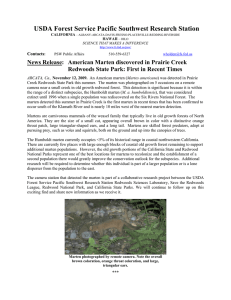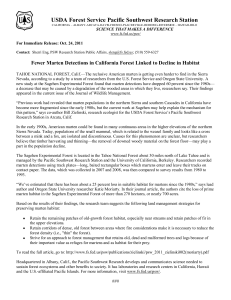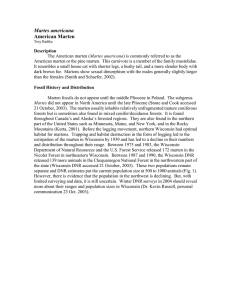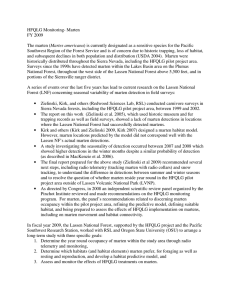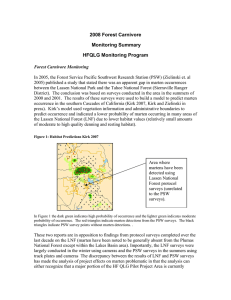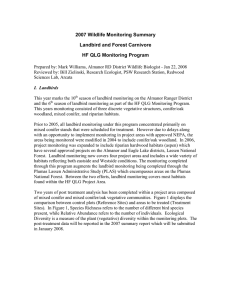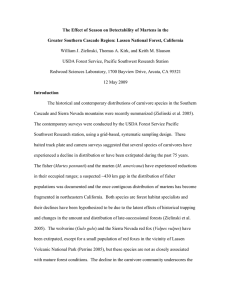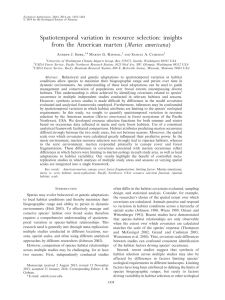American Marten
advertisement
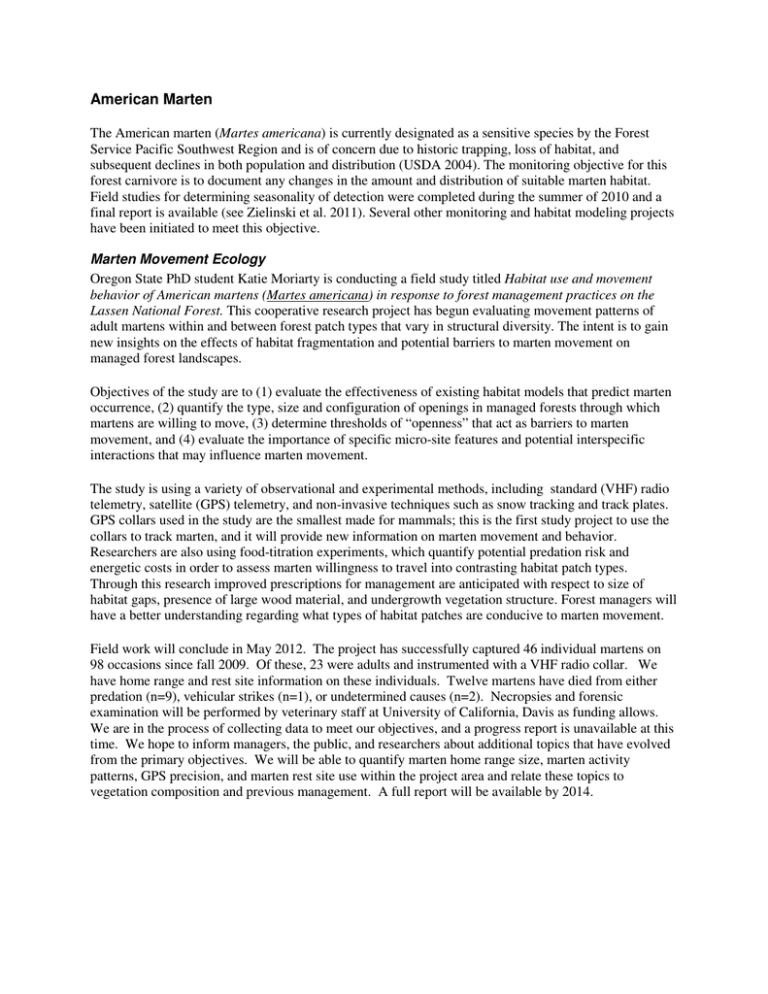
American Marten The American marten (Martes americana) is currently designated as a sensitive species by the Forest Service Pacific Southwest Region and is of concern due to historic trapping, loss of habitat, and subsequent declines in both population and distribution (USDA 2004). The monitoring objective for this forest carnivore is to document any changes in the amount and distribution of suitable marten habitat. Field studies for determining seasonality of detection were completed during the summer of 2010 and a final report is available (see Zielinski et al. 2011). Several other monitoring and habitat modeling projects have been initiated to meet this objective. Marten Movement Ecology Oregon State PhD student Katie Moriarty is conducting a field study titled Habitat use and movement behavior of American martens (Martes americana) in response to forest management practices on the Lassen National Forest. This cooperative research project has begun evaluating movement patterns of adult martens within and between forest patch types that vary in structural diversity. The intent is to gain new insights on the effects of habitat fragmentation and potential barriers to marten movement on managed forest landscapes. Objectives of the study are to (1) evaluate the effectiveness of existing habitat models that predict marten occurrence, (2) quantify the type, size and configuration of openings in managed forests through which martens are willing to move, (3) determine thresholds of “openness” that act as barriers to marten movement, and (4) evaluate the importance of specific micro-site features and potential interspecific interactions that may influence marten movement. The study is using a variety of observational and experimental methods, including standard (VHF) radio telemetry, satellite (GPS) telemetry, and non-invasive techniques such as snow tracking and track plates. GPS collars used in the study are the smallest made for mammals; this is the first study project to use the collars to track marten, and it will provide new information on marten movement and behavior. Researchers are also using food-titration experiments, which quantify potential predation risk and energetic costs in order to assess marten willingness to travel into contrasting habitat patch types. Through this research improved prescriptions for management are anticipated with respect to size of habitat gaps, presence of large wood material, and undergrowth vegetation structure. Forest managers will have a better understanding regarding what types of habitat patches are conducive to marten movement. Field work will conclude in May 2012. The project has successfully captured 46 individual martens on 98 occasions since fall 2009. Of these, 23 were adults and instrumented with a VHF radio collar. We have home range and rest site information on these individuals. Twelve martens have died from either predation (n=9), vehicular strikes (n=1), or undetermined causes (n=2). Necropsies and forensic examination will be performed by veterinary staff at University of California, Davis as funding allows. We are in the process of collecting data to meet our objectives, and a progress report is unavailable at this time. We hope to inform managers, the public, and researchers about additional topics that have evolved from the primary objectives. We will be able to quantify marten home range size, marten activity patterns, GPS precision, and marten rest site use within the project area and relate these topics to vegetation composition and previous management. A full report will be available by 2014.
